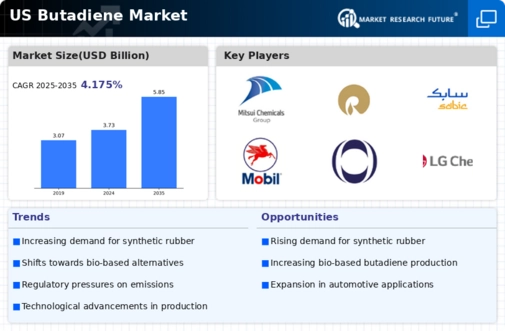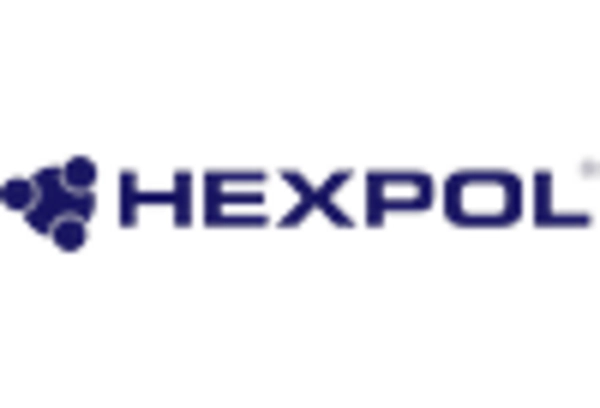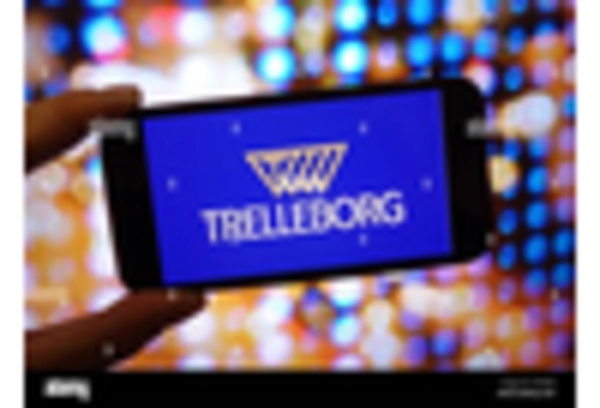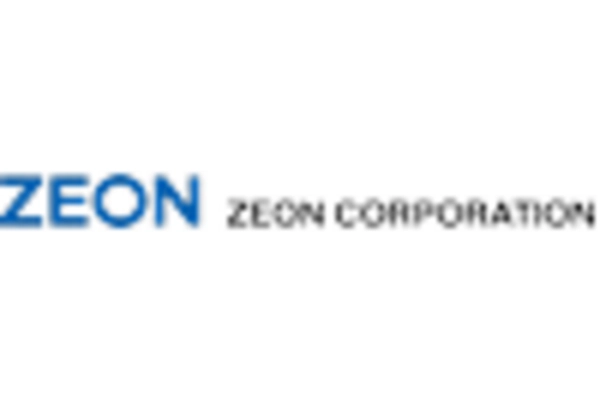Growth in Industrial Applications
The hydrogenated nitrile-butadiene-rubber market is experiencing notable growth due to its increasing utilization in various industrial applications. Industries such as oil and gas, aerospace, and manufacturing are increasingly adopting hydrogenated nitrile-butadiene rubber for its superior resistance to oils, chemicals, and extreme temperatures. This material's ability to withstand harsh environments makes it a preferred choice for seals, gaskets, and hoses. As industrial activities expand, the demand for high-performance materials is likely to rise, further propelling the hydrogenated nitrile-butadiene-rubber market. In 2025, the industrial sector is projected to account for approximately 30% of the total market share, indicating a robust growth trajectory.
Rising Demand for Fuel-Efficient Vehicles
The hydrogenated nitrile-butadiene-rubber market is experiencing growth due to the rising demand for fuel-efficient vehicles. As automotive manufacturers focus on reducing emissions and improving fuel economy, the need for lightweight and durable materials becomes paramount. Hydrogenated nitrile-butadiene rubber offers excellent performance characteristics, making it suitable for various automotive components, including seals and gaskets. The automotive sector is anticipated to contribute significantly to the market, with projections indicating a growth rate of approximately 20% in this segment by 2026. This trend underscores the importance of hydrogenated nitrile-butadiene rubber in meeting the evolving demands of the automotive industry.
Increased Focus on Automotive Safety Standards
The hydrogenated nitrile-butadiene-rubber market is influenced by an increased focus on automotive safety standards. As safety regulations become more stringent, automotive manufacturers are compelled to utilize materials that enhance vehicle safety and performance. Hydrogenated nitrile-butadiene rubber, known for its durability and resistance to wear, is increasingly being integrated into safety-critical components such as airbags and seat belts. This trend is expected to drive market growth, with estimates suggesting a potential increase of 18% in demand from the automotive sector by 2026. The emphasis on safety is likely to solidify the position of hydrogenated nitrile-butadiene rubber as a key material in the automotive industry.
Technological Innovations in Material Processing
Technological innovations in material processing are driving advancements in the hydrogenated nitrile-butadiene-rubber market. Enhanced manufacturing techniques, such as improved polymerization processes and compounding methods, are enabling the production of higher-quality rubber with superior properties. These innovations not only enhance the performance of hydrogenated nitrile-butadiene rubber but also reduce production costs, making it more accessible to various industries. As manufacturers adopt these technologies, the market is likely to witness a growth rate of around 15% over the next few years. This trend indicates a shift towards more efficient production methods within the hydrogenated nitrile-butadiene-rubber market.
Regulatory Support for High-Performance Materials
The hydrogenated nitrile-butadiene-rubber market benefits from increasing regulatory support aimed at promoting high-performance materials. Government initiatives focused on enhancing product safety and environmental standards are driving manufacturers to adopt advanced materials like hydrogenated nitrile-butadiene rubber. This rubber type meets stringent regulations, making it suitable for applications in sectors such as automotive and aerospace. The market is likely to see a surge in demand as companies strive to comply with these regulations, which could lead to a projected market growth of around 25% by 2026. This regulatory landscape is expected to create a favorable environment for the hydrogenated nitrile-butadiene-rubber market.

















Leave a Comment